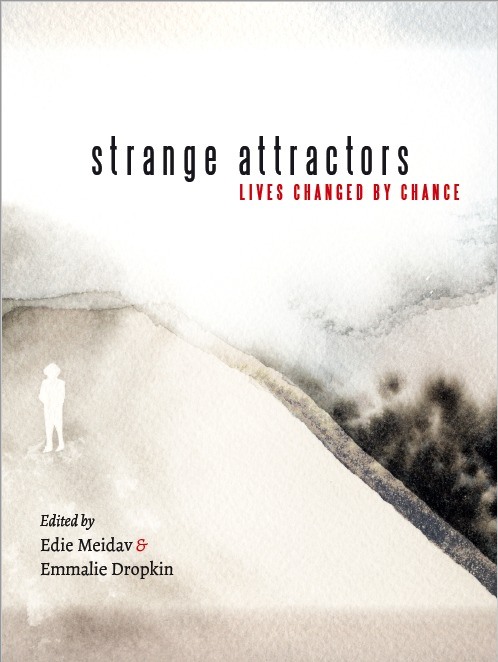by Anitra Pavlico

Springtime always reminds me of Johann Sebastian Bach. When I was young, my father coaxed me to go to a concert celebrating Bach’s 300th birthday. I used to think it was arcane knowledge, Bach’s date of birth, but Google recently featured it on their homepage–he would have been 334 on March 21. He belongs to everyone, even if it feels as if he is communicating to you personally. His music speaks of emotion, vitality, and renewal, which makes it fitting that his birth rings in the spring. Scholars and performers have of course written much about Bach, so I mainly would like to write about my own experiences and to comment on his Well-Tempered Clavier, two volumes of preludes and fugues in each of the keys of the scale, meant at least in part for students learning keyboard. It is much more than exercises, though; as the critic Harold Schonberg wrote, “if music does have a Bible, it is Book I of the Well-Tempered Clavier.”
There is a terrific video on YouTube of András Schiff playing Book I of the Well-Tempered Clavier live at The Proms in 2017. It is as good an accompaniment to this article as any. Even Schiff’s facial expressions tell a story about the emotion inherent in this music. Bach has sometimes been played in a dry, clinical, “sewing machine” style, as Schonberg described in his 1972 column for the New York Times to mark the Well-Tempered Clavier’s 250th anniversary. Schonberg notes, however, that Bach would not have played it that way himself: “His pupils testified that he was always interested in the emotional content of a piece — the Affekt.”
The conductor John Eliot Gardiner writes in Bach: Music in the Castle of Heaven that “Bach’s keyboard works maintain a tension — born of restraint and obedience to self-set conventions — between form (which we might describe variously as cool, severe, unbending, narrow or complex) and content (passionate or intense) more palpably and obviously than does his texted music.” The Well-Tempered Clavier pieces reflect this tension, as beneath the orderly facade lies deep emotion. The first prelude of Book I, in C major, is celestial in its stillness and simplicity. At the same time, it contains near-constant striving: delicious, arpeggiated chords are ever-moving to the end goal of C major where they began. This is one to listen to when you want to believe that life is pure, simple, and good, but you suspect danger lurks under the surface. It is followed by the C minor prelude, in contrast, which is dangerous throughout. After that journey, the accompanying C minor fugue’s eventual arrival at C major is cathartic. Read more »





 You shouldn’t curse. People will take you less seriously. Cursing also reveals a certain laziness on your part, suggesting that you can’t be bothered to come up with more descriptive language. In the end, when you curse, you short change both yourself and your audience. Instead, take the time to use the language more fully, more carefully, and more artfully. In so doing, your message will be clearer, more forceful, and better received.
You shouldn’t curse. People will take you less seriously. Cursing also reveals a certain laziness on your part, suggesting that you can’t be bothered to come up with more descriptive language. In the end, when you curse, you short change both yourself and your audience. Instead, take the time to use the language more fully, more carefully, and more artfully. In so doing, your message will be clearer, more forceful, and better received.


 This is Longyearbyen, Svalbard, Norway, eight hundred miles from the North Pole. Our destination, across the island, is a Russian settlement called Barentsburg.
This is Longyearbyen, Svalbard, Norway, eight hundred miles from the North Pole. Our destination, across the island, is a Russian settlement called Barentsburg. 
 A.S.: Liesl, I love the part in your story where a pack of kids is playing “Murder in the Dark” and the young narrator’s crush, who plays the part of the killer, draws near her in the dark yard: “I didn’t try to back away, I thought maybe he was going to kiss me, but then he killed me which was so predictable.”
A.S.: Liesl, I love the part in your story where a pack of kids is playing “Murder in the Dark” and the young narrator’s crush, who plays the part of the killer, draws near her in the dark yard: “I didn’t try to back away, I thought maybe he was going to kiss me, but then he killed me which was so predictable.” Now in this damp, stiff swollen fingers, mine, once slender, of gossamer touch, which pierced skin with steel, silk, molded spheres, to be kicked by heroes, turned warriors, turned champions, turned angels in distant lands, on green fields and roaring theaters of fierce contest of fury and cheer. Yet I am not there, at the game, but I am present, in every single game. They don’t know do they, that without me, the game would not be, that without me, they, howling with joy, howling in expectant yowls and cheers awash in victorious and defeated tears, and beer, this ritualistic collective catharsis, all of this, without me, would not happen, would not be. This story. Where am I in it? What is history but unspeakable violence, erasure and invisibility, spat and polished into and put a sheen upon, to create a mirror for those who look. Yes, a mirror, after all that effort to put a spin on it, we can’t get away can we from ourselves? Won’t we all in trying to cross drown in our collective grief? It is I, bobbing in steel on these shores, not allowed in, who’s fingers bloodied by a thousand pierces, who’s eyes blinded by constant attention who brings them this. These intricate delicate, fine, exquisite fingers, this attentive keen sight, this laboring, I bring them this, the very thing they claim as their soul a distilled meaning and morphing to something sublime. I who they bar from entering. I, who has been left un-reading, unread, now thirsty, hungry, suffocating. I who makes all of this. I who am their constant dread. Left for dead. But I am here, here, off shore, there in that field, in that theater, amidst the squeals of joy. No, the game does not happen without me. And now, hidden here, bobbing, stealing away in steel, floating, lurching on waves upon waves, broken away from that bondage of needles and stretching skin for a perfect sphere for kicking, I am here. A prisoner of contained fates. The Adriatic laps outside: the smell of salt, octopus, fir, citrus and jasmine presents itself in the way of salvation in the way of pain, unforgettable almost impossible to conjure in language, in memory, how to give words to the scent of lavender and black pine and Crni bor. Or those left behind. Equally uncontained perfumed keys unlocking the mind. No, the game doesn’t happen without the likes of me. But I am suffocating now, I am contained here in a coffin of steel, upon the sea, unwanted, unwelcomed, unseen, listening to the cheering roar of a crowd ecstatic as some adored gladiator whips it into net—that sphere of skin I have sewn. The game, I cannot enter, does not happen without me.
Now in this damp, stiff swollen fingers, mine, once slender, of gossamer touch, which pierced skin with steel, silk, molded spheres, to be kicked by heroes, turned warriors, turned champions, turned angels in distant lands, on green fields and roaring theaters of fierce contest of fury and cheer. Yet I am not there, at the game, but I am present, in every single game. They don’t know do they, that without me, the game would not be, that without me, they, howling with joy, howling in expectant yowls and cheers awash in victorious and defeated tears, and beer, this ritualistic collective catharsis, all of this, without me, would not happen, would not be. This story. Where am I in it? What is history but unspeakable violence, erasure and invisibility, spat and polished into and put a sheen upon, to create a mirror for those who look. Yes, a mirror, after all that effort to put a spin on it, we can’t get away can we from ourselves? Won’t we all in trying to cross drown in our collective grief? It is I, bobbing in steel on these shores, not allowed in, who’s fingers bloodied by a thousand pierces, who’s eyes blinded by constant attention who brings them this. These intricate delicate, fine, exquisite fingers, this attentive keen sight, this laboring, I bring them this, the very thing they claim as their soul a distilled meaning and morphing to something sublime. I who they bar from entering. I, who has been left un-reading, unread, now thirsty, hungry, suffocating. I who makes all of this. I who am their constant dread. Left for dead. But I am here, here, off shore, there in that field, in that theater, amidst the squeals of joy. No, the game does not happen without me. And now, hidden here, bobbing, stealing away in steel, floating, lurching on waves upon waves, broken away from that bondage of needles and stretching skin for a perfect sphere for kicking, I am here. A prisoner of contained fates. The Adriatic laps outside: the smell of salt, octopus, fir, citrus and jasmine presents itself in the way of salvation in the way of pain, unforgettable almost impossible to conjure in language, in memory, how to give words to the scent of lavender and black pine and Crni bor. Or those left behind. Equally uncontained perfumed keys unlocking the mind. No, the game doesn’t happen without the likes of me. But I am suffocating now, I am contained here in a coffin of steel, upon the sea, unwanted, unwelcomed, unseen, listening to the cheering roar of a crowd ecstatic as some adored gladiator whips it into net—that sphere of skin I have sewn. The game, I cannot enter, does not happen without me.
 community, which he found, and a decade later founded the Second Vermont Republic, which advocated Vermont secession from the USA to become an independent state, which it had been from 1777 to 1791. Time magazine named the Second Vermont Republic as one of the “Top 10 Aspiring Nations” in the world as recently as 2011.
community, which he found, and a decade later founded the Second Vermont Republic, which advocated Vermont secession from the USA to become an independent state, which it had been from 1777 to 1791. Time magazine named the Second Vermont Republic as one of the “Top 10 Aspiring Nations” in the world as recently as 2011.



 All this is spelt out in Morris’s 1977 book, The Beginning of the World, most recently reprinted in 2005 (in Morris’s lifetime, and presumably with his approval), and available from Amazon as a paperback or on Kindle.
All this is spelt out in Morris’s 1977 book, The Beginning of the World, most recently reprinted in 2005 (in Morris’s lifetime, and presumably with his approval), and available from Amazon as a paperback or on Kindle.


 Less than a month ago, the Indian Air Force conducted airstrikes inside Pakistan. The last attack of this kind took place in 1971, before I was born, and though tensions between the two countries have never ceased, even the family’s fragmented recollections of blackouts, travel restrictions and patriotic songs on the radio had become a distant memory for me until the moment I found myself stranded in Karachi due to airspace closure and witnessed not just military crossfire but that of the media of the two countries. The outbursts on news channels, as well as social media were interspersed with slogans and songs. One Indian patriotic song in particular, a ghazal by Allama Iqbal who is known as Pakistan’s national poet, sung not only in the voices of India’s celebrity singers and sweet-faced schoolchildren, but also adapted to their military march tune, caught my attention.
Less than a month ago, the Indian Air Force conducted airstrikes inside Pakistan. The last attack of this kind took place in 1971, before I was born, and though tensions between the two countries have never ceased, even the family’s fragmented recollections of blackouts, travel restrictions and patriotic songs on the radio had become a distant memory for me until the moment I found myself stranded in Karachi due to airspace closure and witnessed not just military crossfire but that of the media of the two countries. The outbursts on news channels, as well as social media were interspersed with slogans and songs. One Indian patriotic song in particular, a ghazal by Allama Iqbal who is known as Pakistan’s national poet, sung not only in the voices of India’s celebrity singers and sweet-faced schoolchildren, but also adapted to their military march tune, caught my attention.